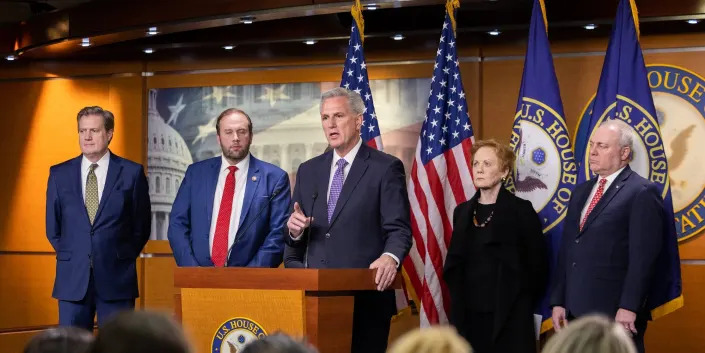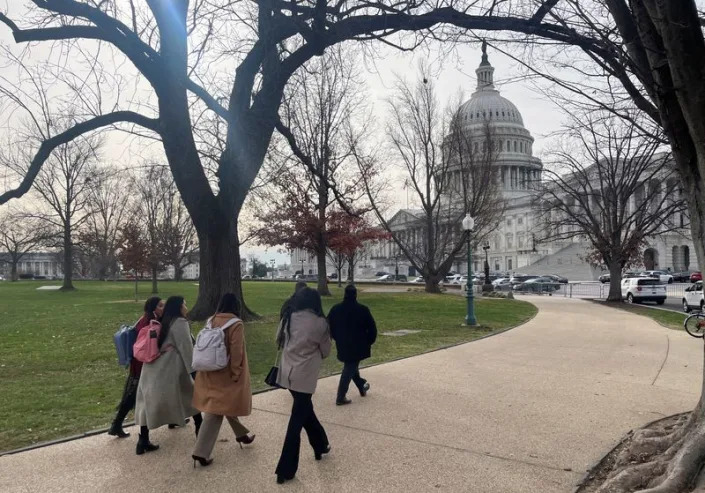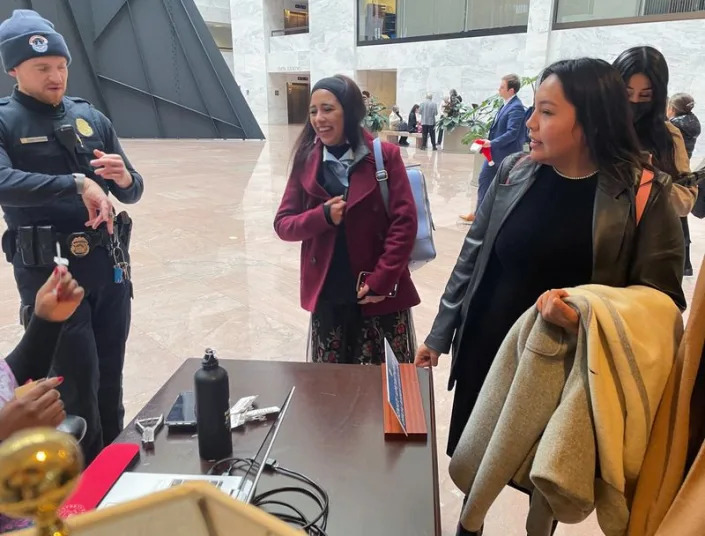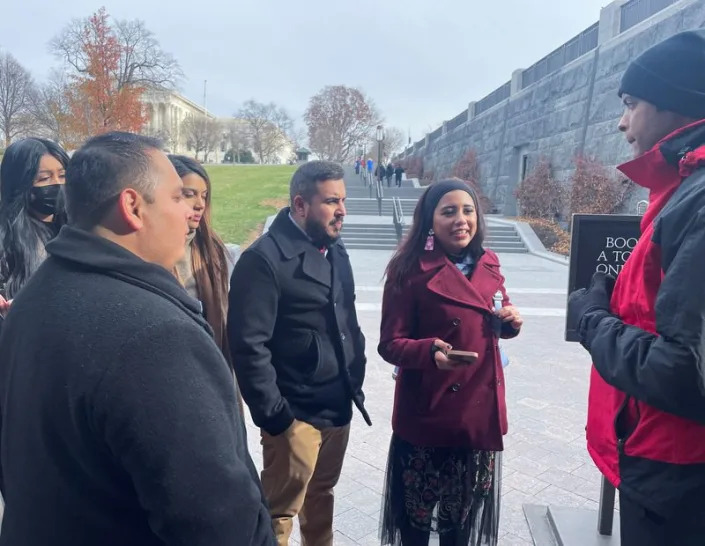Kyle Barr
Thu, December 15, 2022

A VR representation of a city showing a navigation screen in a 3d representation of a city.
Companies like TomTom have struggled for years to beat Google Map’s might in the world of navigation and geolocation, but a partnership facilitated by the Linux Foundation might offer them and the likes of Meta and Microsoft a new means of one-upping the current king.
Some of Google’s biggest rivals are coming together in a kind of rogues gallery with the hopes of creating new open source services to knock Google Maps from its mapping throne.
On Thursday, the nonprofit Linux Foundation announced its own open project that’s meant to collate new map projects through available datasets. And several other major companies have come out of the woodwork to support it in what seems like a bid to finally end Google’s domineering geolocation reign. Those companies include Meta, Microsoft, Amazon Web Services, and none other than Dutch geolocation company TomTom.
This Overture Maps Foundation is essentially an open source program for curating and collating map data across the globe from multiple different data sources. So in essence, the project promises it will use the massive amount of global data housed by these various companies and from outside to build up-to-date maps that developers can then use. Linux also promised this new project will essentially level the playing field for anybody looking to develop up-to-date geolocation services or maps without breaking the bank on expensive commercial data that may not even be accurate.
In the release, Linux Foundation’s Executive Director Jim Zemlin said “Mapping the physical environment and every community in the world, even as they grow and change, is a massively complex challenge that no one organization can manage.”
Of course, all the companies involved could have a major stake in such open services. AWS’ general manager Michael Kopenec said in the release that map data is “cost prohibitive and complex,” though it’s unclear if Amazon wants to break into the world of geolocation as well. Overture could also be a boon to its flagging “metaverse” ambitions, with applications in both VR and AR. The company has its own street view company called Mapillary, and it’s already worked alongside Microsoft on street mapping data.
While Google and its parent company Alphabet were combining its Maps and Waze teams, its street view and AR capabilities keep getting more sophisticated, leaving its potential competitors in the dust, even after it was cited for selling users’ location data. That domination is so great that Google Maps has mapped more than 220 countries and territories, according to the company. Maps is the most-downloaded GPS app by far, and it’s not even close.
Though TomTom’s market share has seriously depleted since highs in 2008, the company has survived against Google Maps with deals in countries where the top performing app wasn’t available. Last month, the company announced a new maps platform. TomTom’s Chief Technology Officer Eric Bowman said in an internal Q&A “The world of maps today is pretty siloed. Everyone who is making a commercial map—whether they admit it or not—is starting to see that there are limits to what any one company can do, no matter how big or powerful or well funded they are.”
TomTom’s CEO Harold Goddijn, said in a release “Overture’s standardization and interoperable base map is fundamental to bringing geospatial information from the world together.”
Meta, Microsoft, AWS and TomTom launch the Overture Maps Foundation to develop interoperable open map data
Paul Sawers
Thu, December 15, 2022
The Linux Foundation has partnered with some of the world's biggest technology companies to develop interoperable and open map data, in what is a clear move to counter Google's dominance in the mapping realm.
The Overture Maps Foundation, as the new effort is called, is officially hosted by the Linux Foundation, but the program is driven by Amazon Web Services (AWS), Facebook's parent company Meta, Microsoft and Dutch mapping company TomTom.
The ultimate mission of the Overture Maps Foundation to power new map products through openly available datasets that can be used and reused across applications and businesses, with each member throwing their own data and resources into the mix.
"Mapping the physical environment and every community in the world, even as they grow and change, is a massively complex challenge that no one organization can manage," noted the Linux Foundation's executive director Jim Zemlin in a press release. "Industry needs to come together to do this for the benefit of all."
Map and location data plays such a fundamental role across society today, powering everything from IoT (Internet of Things) devices and self-driving cars, to logistics and big data visualization tools. Having all that data under the auspices of just one or two mega-firms can be hugely restrictive in terms of what companies can do with the data and what features they have at their disposal, not to mention the costs involved in licensing it.
Spatial mapping will also be vital to emerging technologies such as those required for the Metaverse, which Meta is heavily invested in.
"Immersive experiences, which understand and blend into your physical environment, are critical to the embodied internet of the future," added Jan Erik Solem, engineering director for Maps at Meta. "By delivering interoperable open map data, Overture provides the foundation for an open metaverse built by creators, developers, and businesses alike."
The anti-Google?
Google is a notable omission from the Overture Maps Foundation's founding members. Indeed, that such big names and rivals from the technology sphere are coming together in partnership is probably testament to the stranglehold Google has on the world of mapping, a position it has slowly garnered since launching its Android mobile operating system nearly fifteen years ago.
Moreover, with the iPhone arriving around the same time, a combination that brought maps and navigation into the pockets of millions of people globally, this had a monumental impact on incumbents such as TomTom, which had built a substantial business off the back of physical navigation devices plastered to car windshields.
This graph shows how TomTom's shares plummeted with the advent of the modern smartphone era.

TomTom's shares since the launch of Android and iOS 15 years ago
In the intervening years, TomTom has tried to evolve, striking map and data partnerships with the likes of Uber and Microsoft, while it has also targeted developers with SDKs and hit the acquisition trail to bolster its autonomous vehicle ambitions. But the fact remains, Google and its mapping empire still rule the roost for the most part, something that this new collaboration will go some way toward addressing.
“Collaborative mapmaking is central to TomTom’s strategy -- the Overture Maps Foundation provides the framework to accelerate our goals," TomTom CEO Harold Goddijn noted in a press release. "TomTom’s Maps Platform will leverage the combination of the Overture base map, a broad range of other data, and TomTom’s proprietary data in a continuously integrated and quality-controlled product that serves a broad range of use cases, including the most demanding applications like advanced navigation, search, and automated driving."
Open sesame
The emergence of this new foundation jibes with trends elsewhere across the technology spectrum, with a growing push toward decentralized and interoperable social networks driven by regulatory and societal pressures. Elsewhere, the Linux Foundation also recently announced the OpenWallet Foundation to develop interoperable digital wallets, pushing back against the closed payment ecosystems fostered by tech juggernauts including Google and Apple.
Today's announcement very much fits into that broader trend.
The founding companies are planning to engage in collaborative map-building programs, meshing data from myriad open data sources and knocking it into a format that's consistent, standardized, and fit for use in production systems and applications. This will include channeling data from long-established projects such as OpenStreetMap, in addition to open data provided by municipalities.
While there are only four member companies at launch, there are plans to expand things in the future to include any company with a direct vested interest in open map data.
For now, the Overture Maps Foundation said that it's working toward releasing its first datasets in the first half of 2023, and will include "basic" layers such as roads, buildings, and administrative information. Over time, this will expand to include more places, routing and navigation, and 3D building data.



















